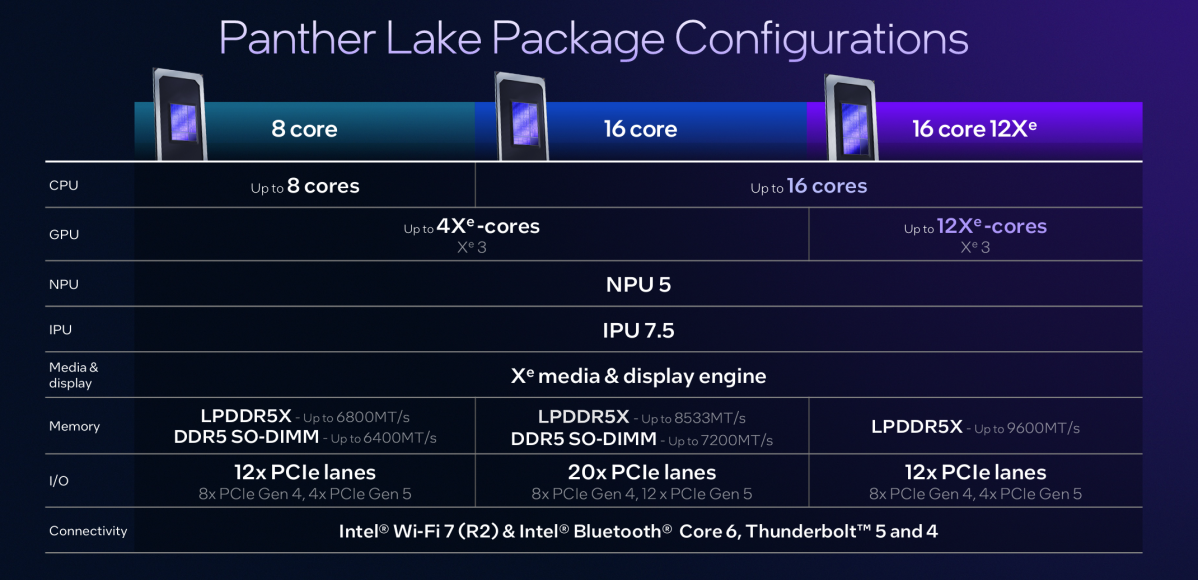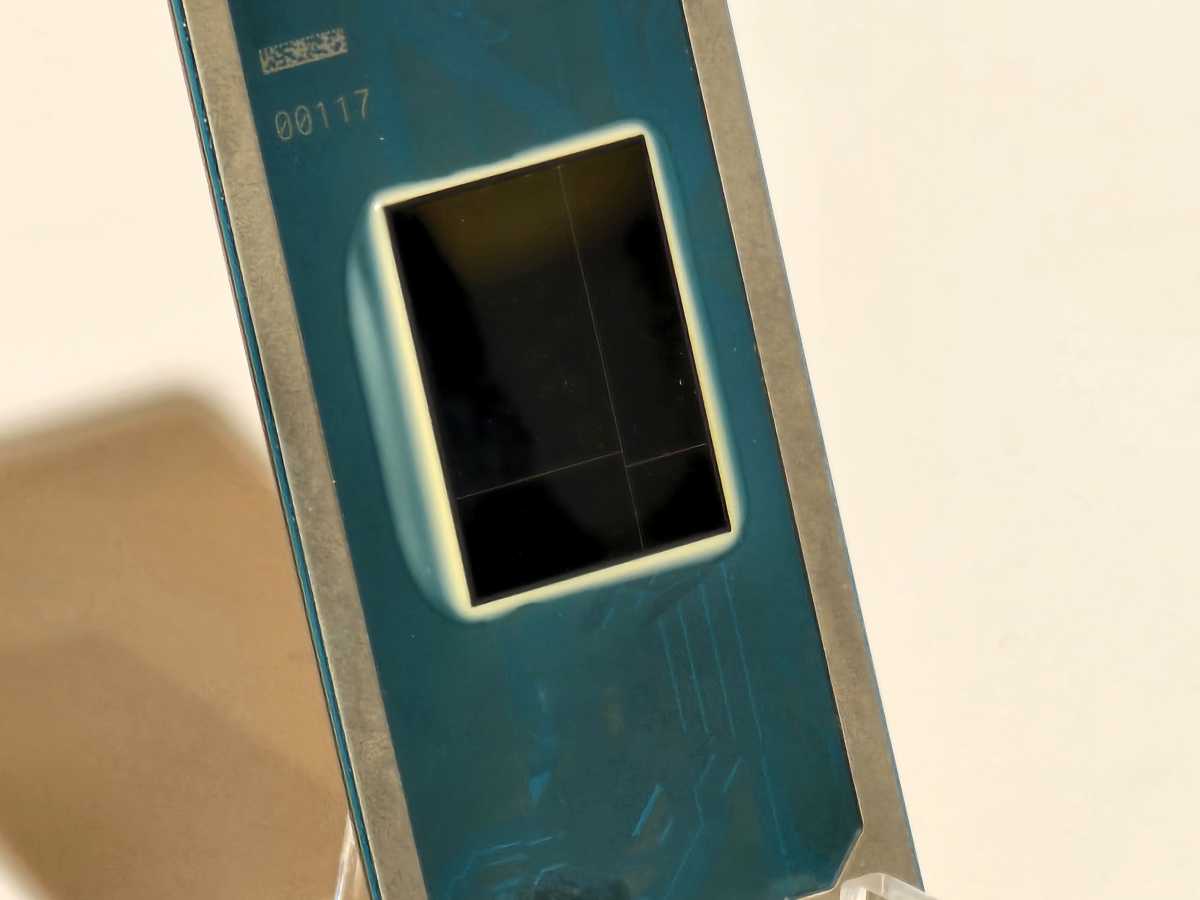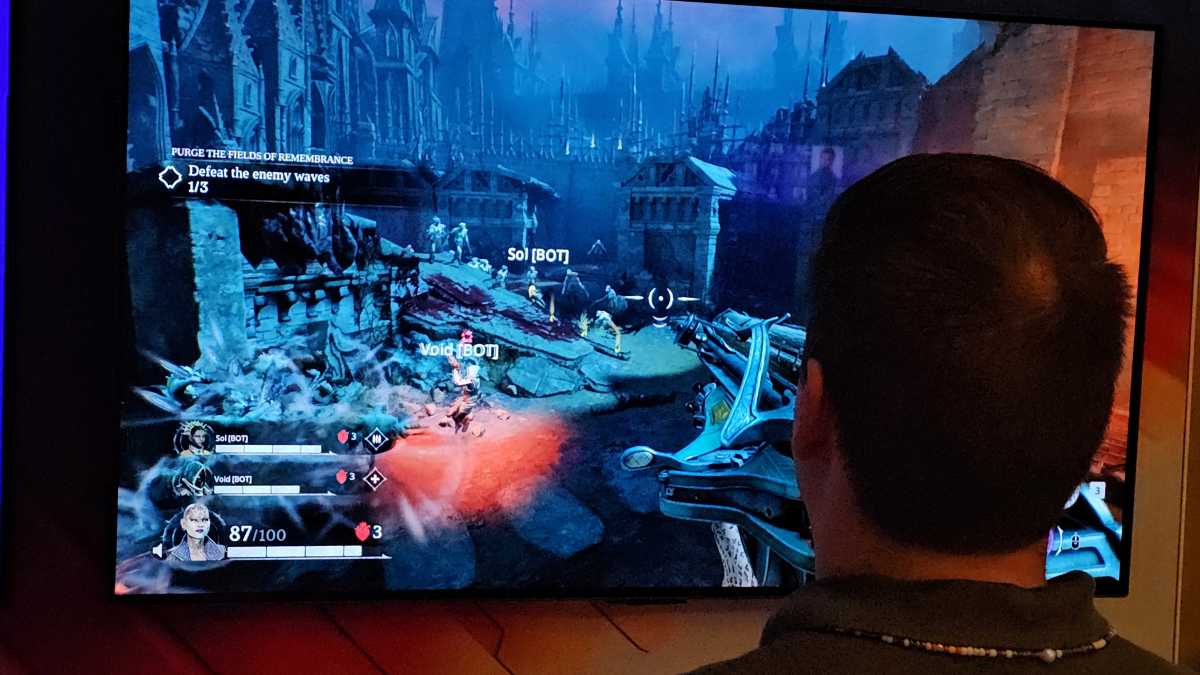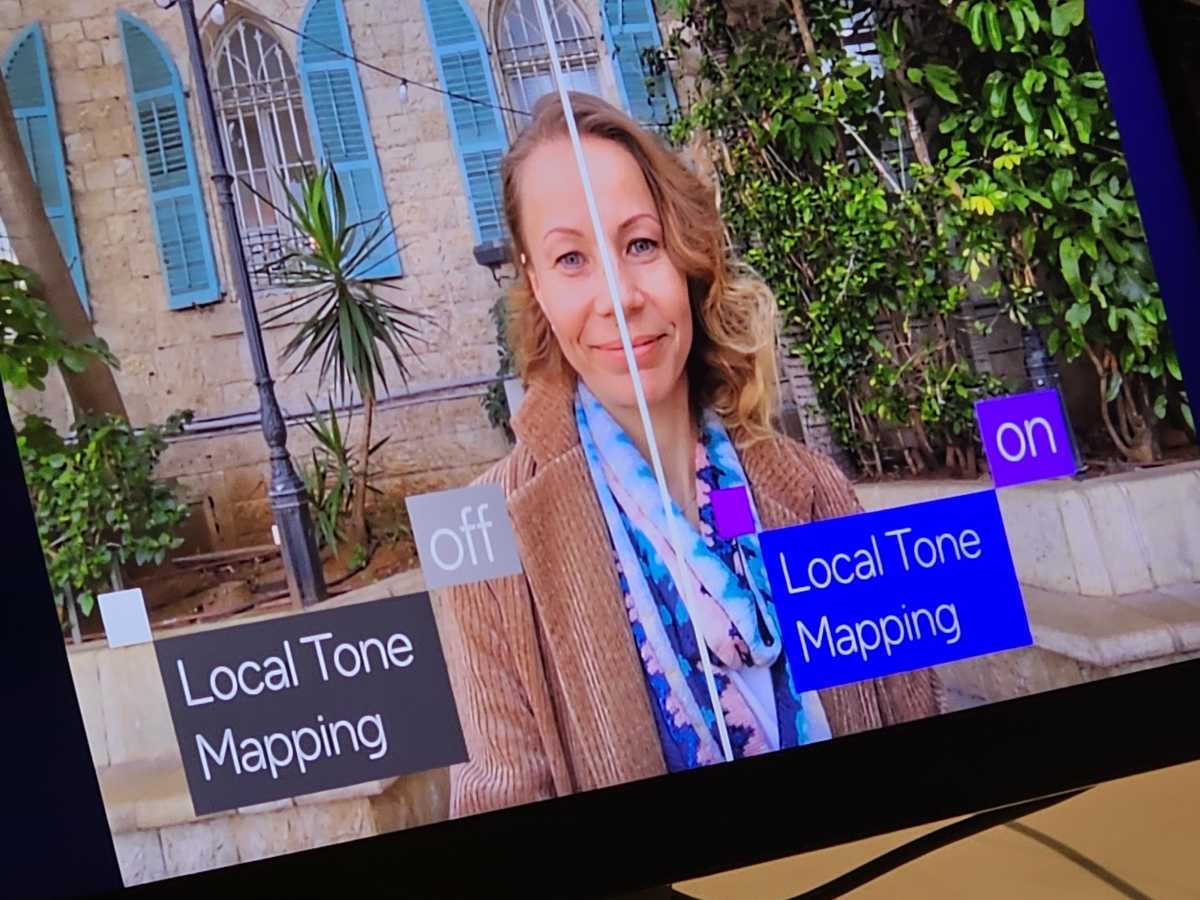Panther Lake, the next generation of Intel’s Core Ultra series of laptop processors, is nearly here. But what is it, exactly?
Intel spent several days explaining the fine details of Panther Lake to journalists at a recent press event, including its new compute cores, graphics cores, NPU AI, and wireless. If you’re interested, PCWorld has a deep dive into all of Panther Lake’s technologies. But if you just want the basics, stay here. Here’s what you need to know about Intel’s “Panther Lake” chip, in brief.
1) Expect Panther Lake in 2026
Intel executives talked about some of the details of Panther Lake themselves. But the details that matter to laptop buyers (speed, price, and which laptops will have them) will have to wait for CES 2026 in Las Vegas this coming January. The actual laptops will ship soon after, perhaps even in January itself.
2) Three chip families, three CPUs
Each Panther Lake chip consists of three possible types of compute cores: a “Cougar Cove” performance core, a “Darkmont” efficiency core, and a Darkmont low-power efficiency core. Performance cores handle tasks like games; efficiency cores process less challenging duties like email and Microsoft Teams.

Intel
Laptop makers will include one of these three Panther Lake chips inside their products:
- An 8-core chip, with 4 performance (P-cores), 4 low-power efficiency-cores (LP E-cores); 4 Xe3 GPU cores and 4 ray-tracing units
- A 16-core chip, with 4 P-cores, 8 efficiency cores (E-cores), and 4 LP E-cores; 4 Xe3 GPU cores and 4 ray-tracing units
- A 16-core chip, with 4 P-cores, 8 E-cores, and 4 LP E-cores; 12 Xe3 GPU cores and 12 ray-tracing units.
3) Who is each Panther Lake chip for?
The 8-core chip will probably be for low-end PCs, though it’s not quite clear how everything will break down. If you’re looking for a gaming laptop with a Panther Lake chip inside, you may be surprised to learn that the middle 16-core/4 Xe3 chip will be the candidate here.
The 16-core/12Xe3 chip sounds like it could be used as Intel’s answer to AMD’s Strix Halo or Ryzen AI Max: designed for gaming, local AI, and possibly handheld PCs as well.
4) A modular CPU, again
Intel has built its processors from modular chiplets, or tiles, for several generations now. In Panther Lake, there is a compute tile, a GPU tile, a platform controller tile, and a “base tile” that the other tiles are mounted upon. All of the tiles are connected together via a second-gen scalable I/O fabric and use Intel’s Foveros technology to stack them.

Mark Hachman / Foundry
Intel built its GPU tile as a separate tile, which apparently allowed for flexibility in its graphics options. Eventually, Intel could use this disaggregated GPU tile as a way to bring the Nvidia RTX GPU tiles into its chips, but this seems like it’s a ways off for now. Still, several tiles are built at TSMC, not Intel, even though the U.S. government has invested in the company to encourage domestic chipmaking.
5) Intel’s Xe3 GPU provides a sharp jump in performance
Integrated graphics continually improves, and Intel believes that the Xe3 GPU core is 50 percent faster on average than Lunar Lake just by itself. The Xe3 core now supports multiframe generation, too — probably its most controversial feature.
6) Multiframe generation: The ‘fake frames’ debate comes to laptops
Perhaps the most important addition to PC graphics technology in the past decade — even more than ray tracing — has been a transition from rendered frames to AI-generated frames. It’s a bit like how your mind processes cartoon animations: It sees a still image and then another still image, and blurs them together. In this case, it’s the GPU doing the work, creating a “made up” frame between two “actual” frames.

Mark Hachman / Foundry
With Panther Lake, multiframe generation adds three of these interpolated (some call them “fake”) frames. Under the right conditions, it can look fantastic, and drive up frame rates to make games look silky smooth. Under the wrong conditions, it can actually make a slowly rendered game look somewhat worse. We don’t know how it will all play out.
7) Early performance estimates are optimistic
Compared to predecessors Lunar Lake and Meteor Lake, Intel’s Panther Lake offers more than 50 percent better multithreaded performance, Intel says. In single-threaded performance (often described as how “snappy” Windows feels) Panther Lake should be 10 percent better than Lunar Lake at the same power.
Intel is also claiming that the total Panther Lake system-on-chip will consume 10 percent less power than Lunar Lake, and demonstrated a trio of laptops running a Core Ultra chip from each generation to back that up.
Unfortunately, we don’t have any “real world” gaming or application benchmark results yet. Expect those in January, or after our own tests.
8) Panther Lake’s NPU power is largely unchanged
TOPS is how chipmakers measure AI performance. At 50 TOPS, Panther Lake isn’t much more powerful than its predecessor, Lunar Lake — though it pales in comparison to Qualcomm’s Snapdragon X2 Elite. What Intel and other chipmakers are hoping for is “agentic AI”: little independent AI agents all roaming though your PC and the web, performing tasks that will suck up those available TOPS. Will it happen? Who knows.

Mark Hachman / Foundry
9) Thunderbolt 4, again!
For whatever reason, Intel chose again not to integrate Thunderbolt 5 technology into its mobile processor. Instead, it’s using Thunderbolt 4 and leaving laptop makers to integrate discrete Thunderbolt 5 chips themselves. Looks like we’ll be prioritizing Thunderbolt 4 inside our recommendations for the best Thunderbolt docks for another year.
10) Panther Lake will keep you looking good
Intel’s integrated laptop processors include what’s called an “image processing unit” that interacts with your webcam. The IPU 7.5, as Intel calls it, includes improved HDR capabilities as well as noise reduction for improved low-light performance. Tone mapping will improve how everything looks, by using either the NPU’s AI or GPU.

Mark Hachman / Foundry
Incidentally, Intel’s image processing will work with either your built-in webcam or standalone webcam.
11) Some unexpectedly cool wireless technologies
I don’t usually think of my laptop’s wireless capabilities as anything special. Wi-Fi 7, Bluetooth, yawn. Not this time.
Panther Lake supports Auracast, which basically outputs to two devices, not just one. Want to watch a YouTube video with a pal, but quietly? Now you don’t have to share earbuds. A technique called platform sounding also provides far more accurate distance modelling, so if you’ve lost your laptop (or, conversely, your earbuds) you can use the onboard Bluetooth to quickly find them.
Intel’s Wi-Fi 7 even supports some unreleased features, which should improve the performance and range of your wireless Panther Lake device.
We’ve now heard from Intel and Qualcomm about their upcoming laptop processors for 2026. Now AMD, what do you have for us?





